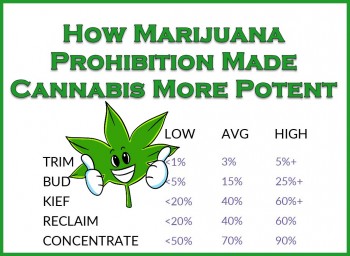The 2023 Recreational Marijuana Supply and Demand Legislative report from the Oregon Liquor and Cannabis Commission states that per-gram cannabis prices in Oregon have decreased by 16% from the previous year, reaching an all-time low of $4.
According to the OLCC, the market demand for marijuana in Oregon was estimated to be 52% of the supply in 2021 and 63% in 2022. Despite the deteriorating market conditions, 2022 was closer to achieving supply/demand equilibrium than 2021. This was due to OLCC Producers reducing annual production in 2022, which offered hope for 2023. However, the prices for usable marijuana continue to decline due to the excess inventory from previous years, which will likely continue to exert downward pressure on prices.
In its report, the OLCC stated that the total amount of usable cannabis sold in Oregon increased in 2021 and 2022, but only at a modest rate. Compared to the 27% growth rate in 2020, the increase was just 1% in 2021 and 2% in 2022. The report also noted a decline in the number of concentrates/extracts, edibles, and tinctures sold in 2022. However, due to the wide variety of products in the market, it is challenging to directly compare the quantities sold from one year to the next.
The OLCC report highlights that Oregon's sales of cannabis increased from $1.1 billion in 2020 to $1.2 billion in 2021 but decreased to $994 million in the following year. Monthly sales reached their highest point in April 2021 but have declined since, except for a spike in August. The report notes that the surplus of cannabis in 2021 and the subsequent price decrease throughout 2022 significantly strained cannabis businesses.
According to the OLCC, despite the moratorium on producer and retailer licenses imposed by lawmakers, the number of licensed producers and retailers in Oregon has reached an all-time high. Although the moratorium only affects new licenses, some eligible applications had been filed as far back as 2018. However, the agency noted that active businesses declined while licenses increased.
Nevertheless, the OLCC identified some positive indicators of improved market health in 2023. The agency cited a less significant decrease in retail prices and "relatively strong" sales of edibles, which experienced modest 0.2% growth last year.
In its report, the OLCC stated that the recreational marijuana market in Oregon shares a significant similarity with other markets in terms of responsiveness to market signals and adjusting supply based on demand. However, the market is unique due to the federal status of cannabis. As a result, Oregon is considered a "market in a box" since the supply must remain within the state's borders, despite having a substantial comparative advantage in cannabis production.
Michigan Has Too Much Weed
In January, marijuana prices in Michigan reached an all-time low, providing significant benefits to retailers and customers. However, smaller growers raise concerns about the surplus supply driving prices down. According to state records, the market has seen an unprecedented increase in supply, with 55 times more marijuana available than two years ago. As a result, customers purchase it at a rate 16 times cheaper than before.
The prices of marijuana have dropped significantly in Michigan, even lower than the rates observed during the drug's illegal status 30 or 40 years ago. In January, the average cost of an ounce (28 grams) decreased by 70% to $152 compared to December 2019's $516. Several dispensaries in Kalamazoo sell an ounce for as little as $80, while the average price for a gram in Michigan is $5, less than half the national average.
According to Andrew Brisbo, the executive director of the Michigan Marijuana Regulatory Agency, the market is stabilizing as the prices and supply are meeting the demand, despite growth being the buzzword in the industry. Michigan is now the fourth-largest marijuana market in the United States, with sales of $1.8 billion in 2021. While voters legalized recreational marijuana in November 2018, the state took another year to establish the licensing framework for sales, leading to the industry's rapid growth.
Smaller and medium-sized marijuana growers are finding it difficult to compete with larger operations as the number of licensed businesses continues to rise. Despite lower prices benefiting customers, growers struggle to match bigger operations' prices. The competition among marijuana growers has increased due to more cities allowing operations. The number of municipalities allowing marijuana businesses has grown from 87 to 118 in the past year, and the number of licensed companies has increased by almost 150, reaching 1,238.
Chris Krestchmer, general manager at Homegrown Cannabis Company in Lansing, has stated that larger marijuana growing operations are increasingly common and are pushing out smaller ones. This is reflected in the nearly four-fold increase in growers over the past two years to 1,238, with 458 classified as Class C, larger operations capable of harvesting 2,000 to 10,000 plants.
According to state records, the amount of recreational marijuana on the market surged from 273,453 pounds to over 1 million pounds within a year, leading to an oversupply. Krestchmer stated that although they were aware of the increase, the rate and intensity of the surge exceeded their expectations, making the market challenging to navigate.
Conclusion
The marijuana industry in states like Oregon and Michigan has experienced significant growth in recent years, with the legalization of recreational marijuana leading to a sales boom and new businesses opening. However, the markets in both states have also faced challenges such as oversupply, declining prices, and increased competition, which have impacted smaller growers and businesses.
Despite these challenges, industry experts and regulators remain optimistic about the market's future, with signs of stabilization and increased demand for certain product sectors. As the industry evolves and matures, it will be interesting to see how businesses adapt to changing market conditions and regulations.
HOW LOW CAN YOU GO? READ ON...
WHEN DO PRICES STOP GOING DOWN IN THE WEED INDUSTRY?








